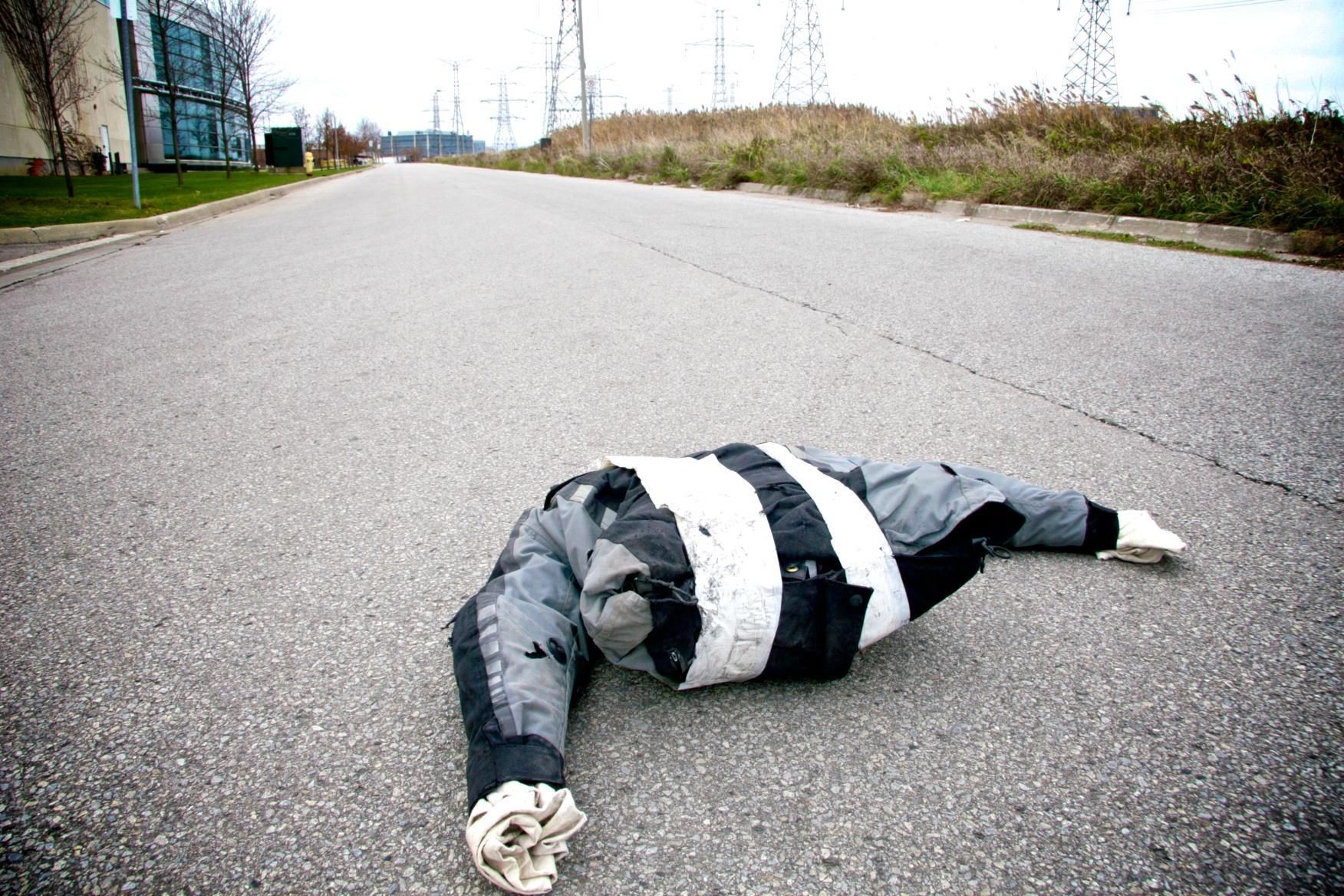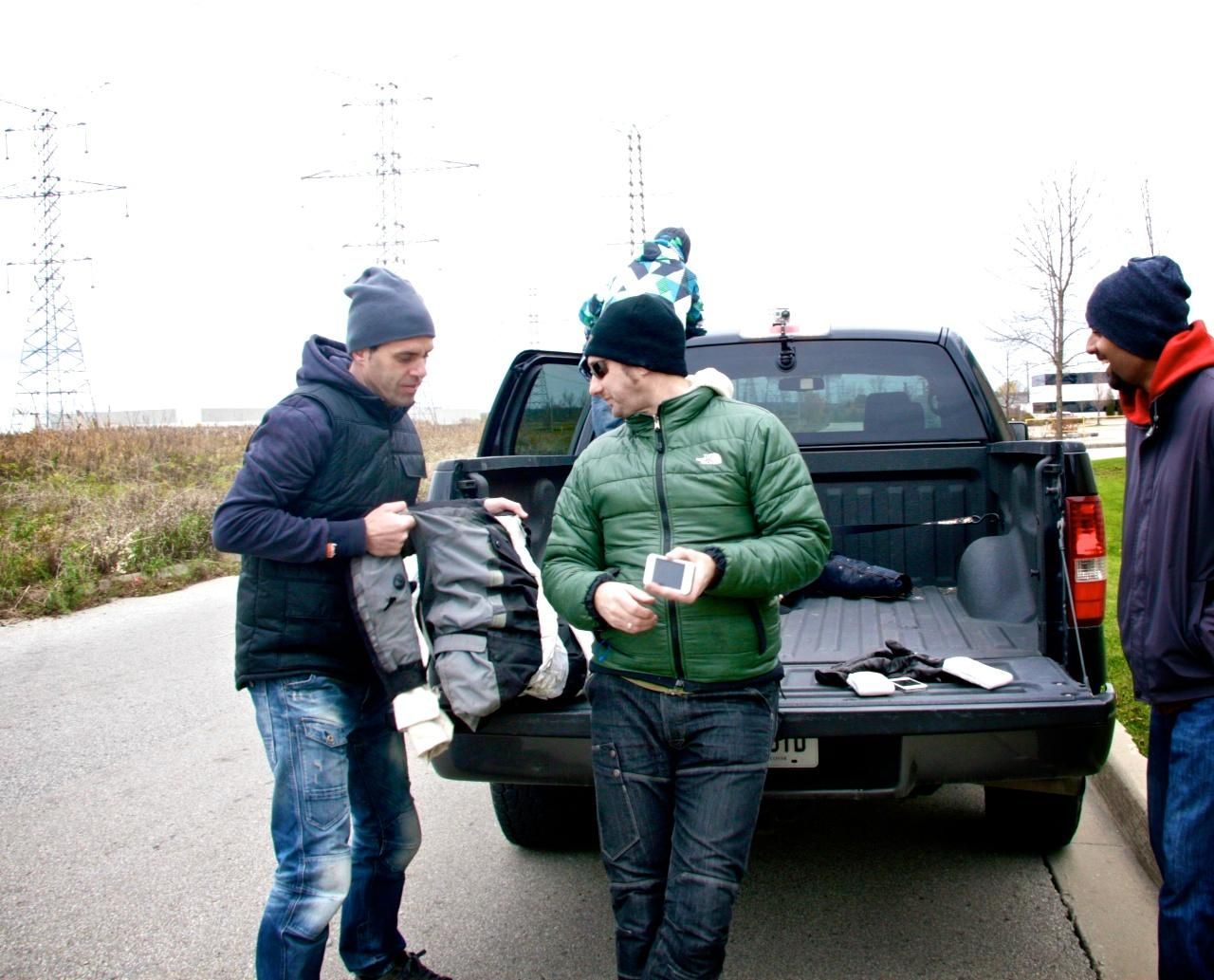EatSleepRIDE Motorcycle CrashLight Tests: The Technology Update

CrashLight Carlos down 1

CrashLight Carlos down 2
Motorcycle Crash Detection App
You may know that we're quietly working away on the new EatSleepRIDE mobile app for iPhone. The app will be the most advanced and comprehensive mobile app available for motorcycle riders. It's been a long few years in the making and we're very close to releasing it this Spring 2013.
The app is called EatSleepRIDE Motorcycles. Our overarching goal was to build an inexpensive, real-time data logging system in the form of an iPhone application that detects motorcycle crashes for the purpose of getting help to a downed rider as quickly as possible and increasing overall safety. Along the way, we've built a number of features in the mobile app but the most sophisticated and high-tech feature is CrashLight.
The CrashLight technology automatically detect a motorcycle crash. Immediately upon detection, CrashLight alerts three of your preset contacts to let them know you need help via voice call, SMS and by sending an email with a link to your exact geographical location.
With this technology, if you want to go riding alone but want to be connected in the event something goes wrong, you will be. You can control who is alerted in the event of a crash and share your location to get help faster.
The Prototype Test Harness
Last year, we worked with about 50 test motorbike riders using a prototype we called the test harness. The prototype was a pared down version of the mobile app designed to collect normal and abnormal ride data. It was built based on extensive research on motorcycle crash dynamics and the analysis of the forces involved in motorcycle crashes. We also contacted government transportation ministries and private organizations specializing in accident reconstruction to gain further insight into motorcycle crash dynamics.
Riders from all over the world were involved in the test harness trials and I think we had about 10 countries represented. The testers represented all types of riding. One of our testers even raced pit bikes on an indoor oval!
Note: If you're one of our tester and you're reading this - thank you again. We're so grateful for your participation. You've all been amazing and you will be the first to get the app the day it's released.
How It Works
Back to the story… As the prototype data came in, a talented group of engineers at the University of Toronto would pour over the data for the purpose of mapping normal and abnormal motorcycle specific riding. The data, mapped to a number of signals on the mobile device, allowed us to observe and simulate motorcycle single-vehicle or multi-vehicle crashes. Our main enemy was false detection for obvious reasons.
We're very excited to say we've reached our goal. CrashLight works! Recently, we conducted additional in-field testing we wanted to share. Here are two test candidates. Danny, as in Pedrosa, and Carlos, as in Checa, two motorcycle racers known for crashing.
The Crash Test Dummies: Carlos and Danny
Danny was a "lighter" 50 lb bag of rice, taped up with white tape and cloaked in a Joe Rocket summer weight jacket, while Carlos was sporting the red stripes and was a more portly 90 lbs of dense construction sand. Each rider was also triple bagged with heavy plastic to avoid "leakage" and wrapped in CE approved motorcycle armour - in both cases, old Joe Rocket gear. Danny and Carlos arms were stuffed with heavy fabric. It looked more like were smuggling contraband.

CrashLight Carlos and Danny
The iPhones used, both iPhone 4s, were carried by the dummies in a home-made .7mm styrofoam sheath to prevent screen damage. Both sheaths we placed inside the front jacket to recreate how a rider would ordinarily carry a mobile phone. You can see them in the photos complete with my Apple iCrash logo on them. I used two of the kids' pencils on the inside of the foam case to give it a bit or bracing and stops the tape from sticking to the phone.

CrashLight iCrash case
Each test effectively involved accelerating to a set speed and ejecting the dummies from the back. One iPhone was running the prototype as a control, while a second was running the actual CrashLight.

CrashLight pulling up Carlos

CrashLight Danny ready
We did this by riding in the back of the truck, using tie downs as a safety harness and releasing the Danny and Carlos manually. We did multiple runs at various speeds. All but one release for Carlos triggered CRASHLIGHT alerts. We know why now and have implemented a fix to CRASHLIGHT. The phones were also just fine as well. Gorilla glass is absolutely remarkable.

Crashlight Carlos throw

CrashLight Carlos crash
We'll be conducting more testes in the coming weeks. Stay tuned. Thank you to our engineers, our team of test riders all over the world and everyone for the support you provided. And most importantly to the Canadian Media Fund (CMF) for their generous support for this innovation project.